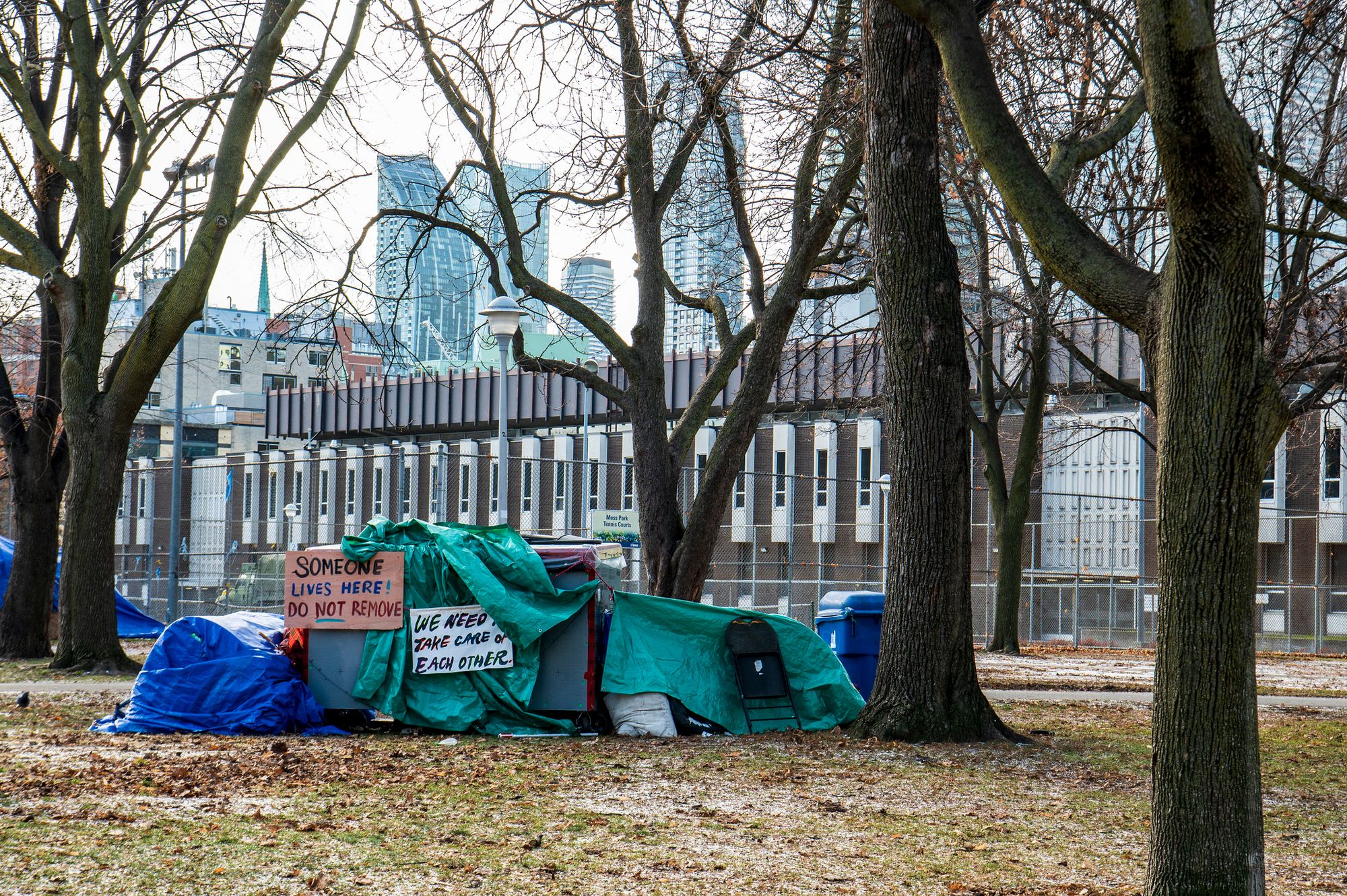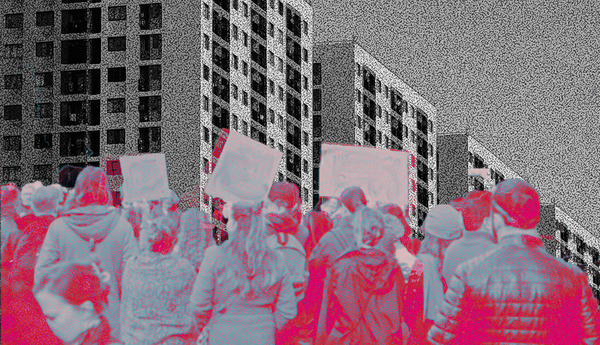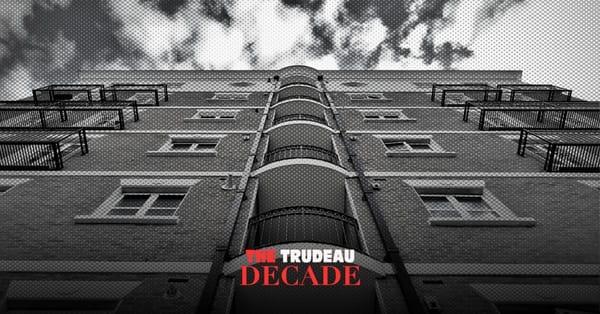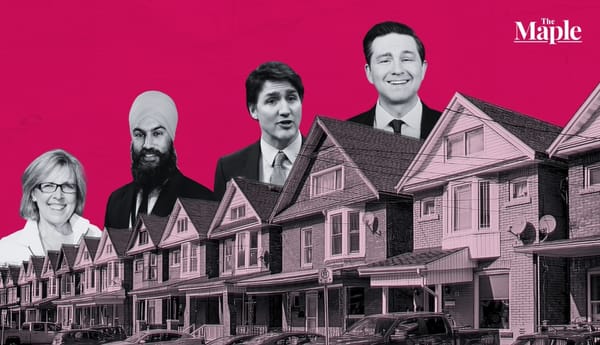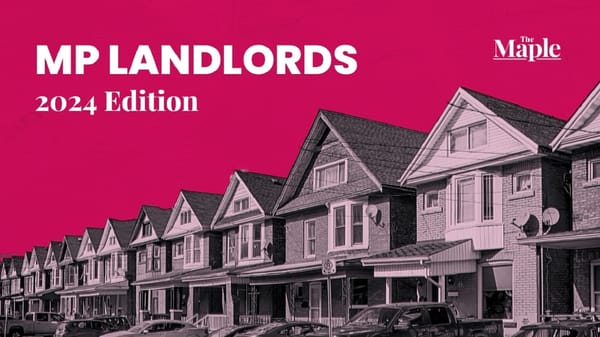To the public eye, the Toronto Police Service’s (TPS) recent exceedingly violent encampment evictions appear to be arbitrary shows of brute force. Public sentiments of horror and confusion are justified — after all, the City of Toronto spends millions of its budget on both police and private security firms in order to displace what is often no more than 10 to 20 encampment residents.
Yet these encampment evictions are far from arbitrary. Toronto has concrete ideological motivations to crack down on a unique moment of class consciousness, wherein the barriers between the housed and unhoused are slowly crumbling.
Dividing the working-class has been an ever-present ideological tool for the maintenance of capitalism. W.E.B. Du Bois has written, for example, that the development of capitalism necessitated pinning free labour against unfree labour. This distinction between workers “tended to reduce all labour toward slavery” and at the same time created a desire among white workers to commodify their labour power to make themselves distinct from the unfree labourer.
Whether it be between black and white, free and unfree labour, or all the micro-categories of “middle class,” “upper-middle class,” or “skilled” vs. “unskilled” labour, capitalist ideology pushes the continuous creation of distinction in an effort to hamper class solidarity and normalize unjust living conditions. What is less discussed, however, is the distinction between housed and unhoused.
Insofar as housed people see themselves as distinct from the unhoused, they are not only limited from feeling class solidarity with them, but also more likely to normalize high rents, poor living conditions and the majority of their incomes going to an increasingly shrinking group of landowners. In other words, so long as unhoused people are distinct and dehumanized, housed people remain divorced from the reality that they themselves may often only be a few missed paycheques away from being in a similar situation. It’s not uncommon to hear the mass acceptance of a grim reality: ‘Well, Toronto is just an expensive city.’
Toronto’s methods in dealing with the unhoused draw precisely from these ideologies, and prior to the pandemic they had somewhat managed to segregate a majority of the unhoused population away from the public eye into an unsafe shelter system. The incentive to do this is twofold: first, to invisibilize them, and second, to dehumanize them through hyper-precarious living conditions — all of which serves the function of maintaining their distinctness. When the pandemic hit, however, things changed.
The Temporal Shift In Toronto
The pandemic has proven to be a temporal shift for Toronto, with the lines between housed and unhoused being blurred.
The unhoused taking up residence in parks isn’t a new phenomenon, but throughout the pandemic this has happened in unprecedented number. This desire for those facing homelessness to search for alternative living arrangements is due in part to how exceptionally unsafe shelter systems have become: they’ve been hit by rampant COVID-19 outbreaks, and the City has even been taken to court twice for failing to ensure physical distancing between residents.
The City was, of course, always aware of what the pandemic meant for the shelter system: an influx of unhoused individuals would be left outside, and they could no longer invisibilize and segregate the unhoused population behind closed doors. With these ideological implications in mind, the City signed multiple temporary contracts with hotels this March. These shelter-hotels, however, proved to be as dangerous as regular shelters. With inadequate access to harm-reduction services resulting in several overdose deaths, and multiple COVID-19 outbreaks, it’s not a surprise that encampments continued to grow.
This leads to the second part of the temporal shift. As encampments grew with the beginning of the pandemic, so did awareness and support. For the first time on a mass scale, housed people in Toronto became closer to the unhoused not only in proximity (insofar as many encampments were and are in popular city parks) but also in solidarity. The housing crisis was now on full display, and the establishment of support networks across the city meant people were learning that they, too, can support their neighbours in encampments.
In the early days of the pandemic when encampments were smaller, the TPS would often quietly show up after giving a couple hours of notice to evict encampments with a bulldozer. As a response to these events, Anna Jessup, an elementary school teacher who came to help defend an encampment, stood in front of a bulldozer and prevented an eviction. This was one of the earliest moments of solidarity to be picked up by media, and the movement grew. Slowly, more people were gathering to help protect encampment residents or simply to witness what had hitherto been largely unobserved demolitions of them along the Gardiner Expressway, a major thoroughfare near the city’s shore.
By May of 2020, these actions were consolidated in the founding of the Encampment Support Network (ESN), which has since been providing supplies, support, food and safety to encampments, as well as acting as key observers of evictions by Toronto police. Suddenly, what often went unnoticed — both encampments as well as their evictions — became a matter of critical importance in Toronto’s collective consciousness. Homes across the city began displaying ESN’s “I Support My Neighbours In Tents” signs along their windows and lawns.
ESN’s growth went in tandem with the establishment of Toronto Tiny Shelters (TTS) in October 2020. Recognizing the influx of people that would be outside given the pandemic, TTS began building small shelters for the harsh winter weather, which provided warm and safe spaces to sleep, away from the contagion of the scarce indoor options offered by the City.
The City of Toronto’s Ideological Tactics
With this temporal shift of encampments spreading across the city, the housing crisis becoming increasingly visible and the growth of support networks, the City’s ideological mission was put under threat. As a result, Toronto police ramped up encampment evictions this May to further invisibilize unhoused people and limit public support.
A substantial police presence was sent in for the first eviction at Lamport Stadium to remove around 15 people. But when the City failed in their mission and recognized that police action against the unhoused was no longer going unnoticed, they continued to escalate the violence. In June, TPS took on the encampments at Trinity Bellwoods Park with great force, pepper spray and the illegal use of kettling.
The largest show of force was the two most recent evictions in July, which took place on back-to-back days: at Alexandra Park on July 20, and then Lamport Stadium on July 21. These were carried out in the early morning, which was a deliberate attempt to confuse and exhaust supporters, and limit as many observers as possible.
In the case of Alexandra Park, media were denied entry after 7 a.m. and the City fenced off the entire park, making it impossible to see the destruction, harassment, and arrests on the inside.
At Lamport Stadium, the TPS used batons and brute force, broke bones, caused concussions, and choked, punched, clubbed, and pepper-sprayed residents and those standing in solidarity with them. They also destroyed thousands of dollars worth of residents’ personal possessions. Police had set up the fences around the encampment so widely that a nearby street was entirely blocked off, limiting most access from solidarity protesters and public observers.
Moreover, media were denied entry to the encampment, and residents were given an ultimatum that if they came out of the fences to have a press conference, they’d no longer be able to discuss ‘housing options,’ which just meant being moved into shelters and out of public view.
This tactic of hampering media access and reducing visibility through broad-set fences has now become the modus operandi of the TPS — to invisibilize unhoused people and limit public support for residents as much as possible.
Over the span of the last year, the City has also been chipping away at the Tiny Shelters, demolishing at least 67 of the more than 100 built. The City filed an injunction against TTS this February, forcing them to stop building more shelters. TTS has made multiple attempts to get the City to allow them to move or repurpose materials, but to no avail.
The City often cites fire and health hazards in an attempt to justify its demolition of Tiny Shelters and encampments. This ignores the fact that the City’s shelter system is wracked with safety issues. But this omission is intentional, because the demolitions aren’t about safety, but rather optics. Tiny Shelters, just like regular shelters, provide a roof over people’s heads. Yet what is different about Tiny Shelters and encampments is that they’re hyper-visible, whereas the City does its best to make official respites and shelters look as ambiguous and invisible as possible, with the least amount of resources.
The mission, again, is to invisibilize the unhoused to conceal the housing crisis, and to dehumanize them to maintain their distinctness. All of which is ultimately in the name of crushing class consciousness in the defence of private property.
After the disaster at Lamport Stadium, the City put planned evictions at Moss Park on hold. Yet encampment evictions are still taking place. Just recently, a small encampment was evicted from Jefferson Avenue, where a few people had taken residence to be close to the services at the Respite Centre near Lamport Stadium.
It’s now an integral moment, especially with the continued possibility of a Moss Park clearing and quieter ongoing evictions and demolitions, to advocate for our unhoused neighbours, as well as defunding the police and reallocating the more than $1 billion spent on them each year into addressing the housing crisis.
Most importantly, however, we must resist the city’s attempts to distinguish between housed and unhoused, to particularize the struggle of the working class and to hamper class solidarity. These are not local nor particular struggles — the struggle of every encampment eviction is a result of a capitalist ideology of creating distinctness in the defence of private property.
Moreover, as consciousness of the housing crisis grows alongside emerging solidarity, so do the potentials for strong tenant solidarity networks. This has increasingly been the case, with the KeepYourRent group closely monitoring eviction notices, as well as strong rent strike movements, particularly in the Parkdale neighbourhood.
We are, after all, acknowledging that the differences between us have been constructed for the benefit of a select few. These distinctions are crumbling, and the Toronto police’s brute force on behalf of the City only demonstrates their awareness of a new moment of solidarity.

